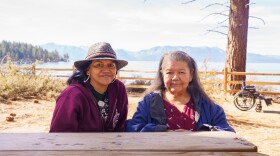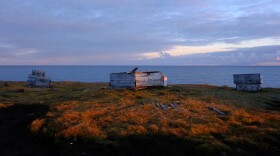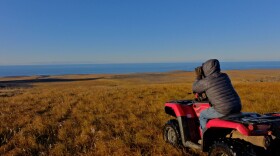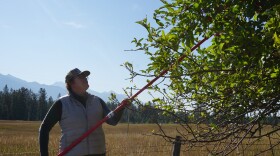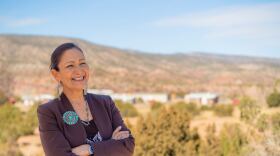The Our Living Lands team includes host Antonia Gonzales (Navajo), editor Joseph Lee (Aquinnah Wampanoag), and reporter/producer Daniel Spaulding (Nimíipúu). Mountain West News Bureau Managing Editor Michael de Yoanna oversees the program. Theme music by Delbert Anderson (Navajo).
Stations can contact Native Voice One for distribution information.
-
The Washoe people believe the Tahoe Basin is the spiritual center of their world. They only have limited access to its shores but grassroots nonprofit aims to change that, healing both land and people.
-
Alaska Desk reporter Alena Naiden spoke to Our Living Lands Producer Daniel Spaulding about her reporting from Savoonga on the effort to preserve traditional ice cellars, climate change’s impact on subsistence and more.
-
Climate change has threatened subsistence practices in the Arctic. Alena Naiden reports how one village in Alaska is trying to transform reindeer herding practices into a sustainable business.
-
The Miccosukee Tribe has faced climate change on their lands in the Florida Everglades. Now they are fighting a federal immigration detention center.
-
Data centers are powering a technological boom but they also use a lot of water. Our Living Lands Producer Daniel Spaulding spoke to Kaleb Roedel about his reporting on the Pyramid Lake Paiute Tribe's concerns about a data center near their reservation.
-
Amy Bowers Cordalis is a Yurok attorney who has fought to protect her people's land, water, and way of life. Our Living Lands producer Daniel Spaulding spoke to Cordalis about her new book, The Water Remembers.
-
Climate is impacting Indigenous communities in the Pacific. Our Living Lands Producer Daniel Spaulding spoke to Anita Hofschneider, a reporter who covers issues including sea level rise, fires and storms.
-
Picking apples to make cider is one way the Confederated Salish and Kootenai Tribes on the Flathead Indian Reservation are helping to reduce conflicts between grizzly bears and humans. The Mountain West News Bureau’s Hanna Merzbach reported on the process from Northwest Montana.
-
The Westwin Elements nickel refinery in Lawton, Oklahoma is trying to provide a domestic source for critical minerals. KOSU’s Sarah Liese highlights what is at stake for Westwin Elements, as they work to secure the mineral supply chain, and the tribal nations who oppose it.
-
Last week, we reported on a nickel refinery in Oklahoma that is built on the historic reservation of the Kiowa, Comanche and Apache tribal nations. But the refinery is operating without consent, which brings up questions of tribal sovereignty.
-
Across the country, critical minerals are in increasingly high demand for green technology and national defense. In the first of a three part series, KOSU’s Sarah Liese reports on a nickel refinery in Oklahoma facing pushback from three tribal nations.
-
Deb Haaland, a member of the Pueblo of Laguna, was the first Indigenous US Secretary of the Interior. Our Living Lands Producer Daniel Spaulding spoke with her about the challenges and opportunities facing tribes, including climate change and political headwinds.




